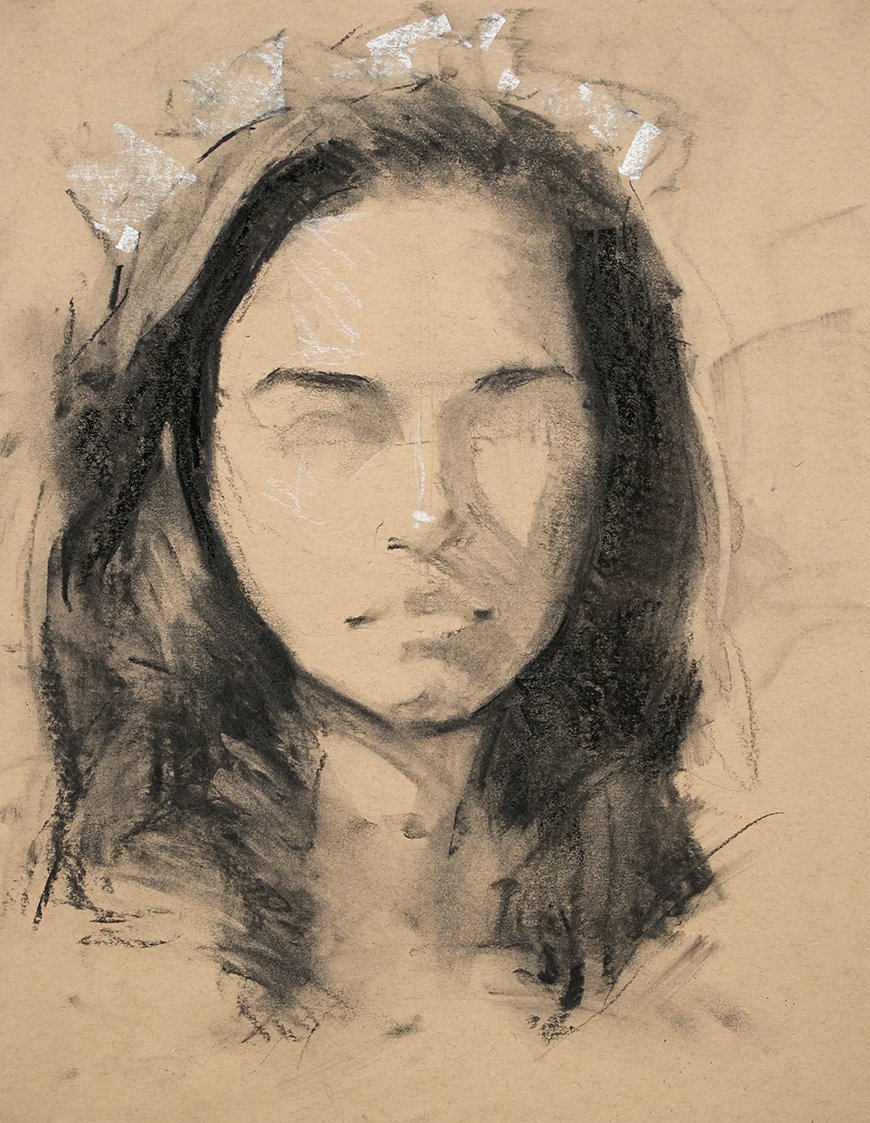How do I draw hair?
As an aspiring artist, you may have pondered the question, "How do I draw hair?" Hair, with its flowing strands and textures, offers a canvas of opportunities to showcase your artistry. Drawing and painting hair can be a truly rewarding experience, allowing you to infuse a sense of freedom and expression into your portraits. Today, I'm delighted to offer you some valuable insights into the art of drawing hair and various hairstyles, a skill that we also delve into more comprehensively in our Painterly Portrait Course.
The Beauty of Drawing Hair:
How to Draw Hair is a subject that I am particularly passionate about in my artistic journey. It's a fascinating aspect of portraiture because it allows you to embrace a loose and painterly pastel style, breathing life into your subjects. While I can't cover all the intricacies in this short post, I hope to provide you with a glimpse of the do's and don'ts when it comes to drawing hair.
The Do's and Don'ts of Drawing Hair:
Drawing hair requires a delicate balance of technique and observation. Here are some essential do's and don'ts to keep in mind as you embark on your artistic journey:
✅ The Do's:
Look for the large shapes first: Begin by identifying the major shapes of hair and block them in with simple values as a tone.
Follow the big pattern of light and shadow: Squint your eyes to simplify the value shapes created by light and shadow.
Sketch the values you see: Draw what you observe, not what you assume. Even blond hair can appear darker in shadows, so accurately depicts what you see in your hair reference art.
Look for the suggestion of detail: Instead of focusing on precise descriptions, aim to suggest details in the well-lit areas of the hair, not in the shadows.
Use a variety of mark-making techniques: Experiment with different mark-making methods to create the surface effects of hair whether it is straight, curly, or texture hair mark-making will help you to its texture and style.
Use a variety of edge qualities: Vary the sharpness and softness of edges where hair meets skin, clothing, and the background. The transition can be soft at the hairline but harder like a pencil drawing where it overlaps the face.
🛑 The Don'ts:
Don't focus on the details first: Reserve detailed work for later stages of your artwork.
Don't focus excessively on surface texture: Avoid becoming overly fixated on the texture of hair, as it should not overshadow the overall masses.
Don't paint every hair: Instead of painstakingly rendering each strand, keep it simple aim to create the illusion of detail.
Don't be swayed by hair color: Focus on capturing the play of light and shadow on hair, rather than getting distracted by its color.
Don't use consistent edges around the hair: Create diversity in edge qualities throughout your artwork, ensuring that hair appears natural in various contexts.
Don't overload shadows with detail: Keep shadows subtle, reserving detailed work for the well-lit areas of the hair.
Unlock the Secrets in Our Portrait Course:
If you find this introduction to drawing hair intriguing, you'll be thrilled to know that our Painterly Portrait Course delves into this art form in great detail. In the course, we guide you through the techniques and nuances of capturing both simple and complex hairstyles realistically, ensuring that your portraits exude a sense of authenticity and depth.
A Sneak Peek: Drawing Hair with Vine Charcoal
To provide you with a taste of what awaits you in our Portraits Course, I invite you to watch the lesson below. In this video, I walk you through valuable tips on how to sketch and draw hair while using vine charcoal. It's a sneak peek into the world of lifelike portrait perfection that you can achieve with the right guidance. This technique is really helpful for drawing dark and black hair.
Join the Next Round of Our Painterly Portrait Course:
Are you ready to embark on a journey to master the art of drawing hair and elevate your portrait skills to new heights? Our Painterly Portrait Course is designed to nurture your talent, boost your confidence, and refine your techniques. By joining the next round of our course, you'll gain access to in-depth lessons, personalized guidance, and a supportive community of fellow artists.
Don't let your portraits struggle with hair. Let's make sure your next portrait has a remarkable "hair day"! Enroll in our Painterly Portrait Course today and experience the transformative journey of artistic growth and mastery. Unlock the secrets to creating portraits that truly come to life.





